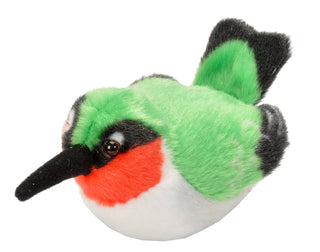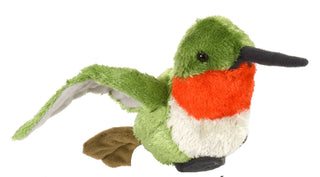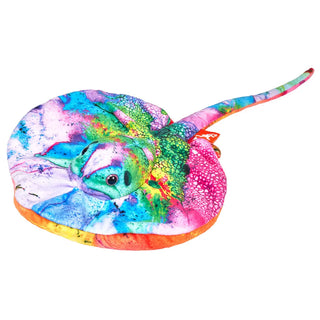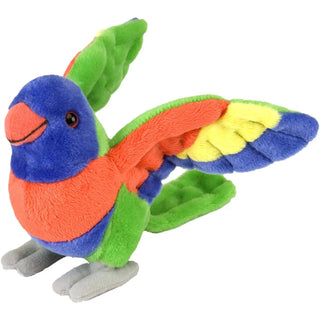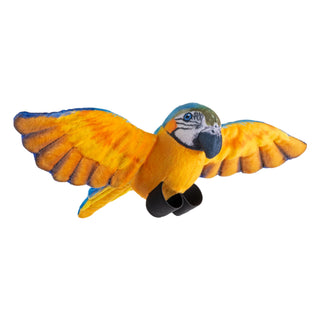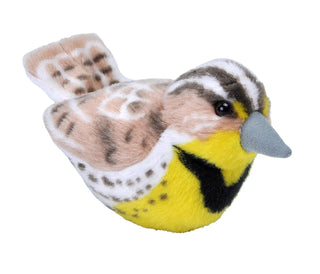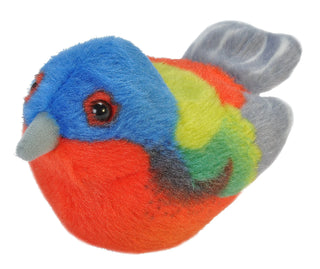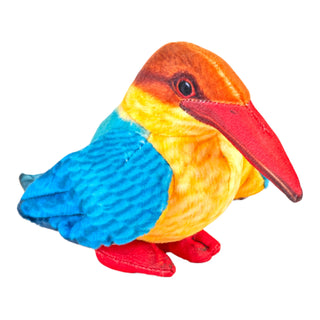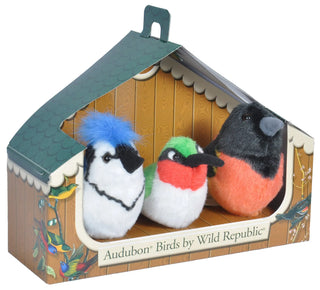Your Search For "hummingbird" Revealed The Following:
Filter
Active Filters
Audubon II Ruby Throat Hummingbird
$12.99
- Unit price
- / per
INCLUDES:
- Age:0+
- AnimalType:Hummingbird
- Brand:Audubon Birds
- Features:With Sound
- Gender:Boy
- Gender:Girl
- Hummingbird
- Size:5"
$12.99
- Unit price
- / per
Hummingbird Stuffed Animal - 8"
$12.99
- Unit price
- / per
INCLUDES:
- Age:0+
- AnimalType:Hummingbird
- Brand:Cuddlekins
- Gender:Boy
- Gender:Girl
- Hummingbird
- Size:8"
$12.99
- Unit price
- / per
Mysteries of Atlantis Stingray
Regular price
$12.00
$14.99
Save 20%
- Unit price
- / per
INCLUDES:
- Age:0+
- Brand:Mysteries of Atlantis
- Gender:Boy
- Gender:Girl
- Size:8"
Regular price
$12.00
$14.99
Save 20%
- Unit price
- / per
Lorikeet Stuffed Animal - 8"
$12.99
- Unit price
- / per
INCLUDES:
- Age:0+
- AnimalType:Lorikeet
- Brand:Cuddlekins
- Gender:Boy
- Gender:Girl
- Lorikeet
- Size:8"
$12.99
- Unit price
- / per
Rainforest Birds Blue And Yellow Macaw Stuffed Animal - 4.5"
$12.99
- Unit price
- / per
INCLUDES:
- Age:0+
- Brand:Rainforest Birds
- Gender:Boy
- Gender:Girl
- Size:4.5"
$12.99
- Unit price
- / per
Audubon II Western Meadowlark
$12.99
- Unit price
- / per
INCLUDES:
- Age:0+
- AnimalType:Western Meadowlark
- Brand:Audubon Birds
- Features:With Sound
- Gender:Boy
- Gender:Girl
- Size:5"
- Western Meadowlark
$12.99
- Unit price
- / per
Audubon II Painted Bunting Stuffed Animal with Sound - 5"
$12.99
- Unit price
- / per
INCLUDES:
- Age:0+
- AnimalType:Painted Bunting
- Brand:Audubon Birds
- Features:With Sound
- Gender:Boy
- Gender:Girl
- Painted Bunting
- Size:5"
$12.99
- Unit price
- / per
Rainforest Birds Stork Billed King Stuffed Animal - 4.5"
$8.99
- Unit price
- / per
INCLUDES:
- Age:0+
- Brand:Rainforest Birds
- Gender:Boy
- Gender:Girl
- Size:4.5"
$8.99
- Unit price
- / per
Audubon Bird Assortment - Series 2
$45.99
- Unit price
- / per
INCLUDES:
- Age:0+
- AnimalType:Bird
- Bird
- Brand:Audubon Birds
- Features:With Sound
- Gender:Boy
- Gender:Girl
- Size:5"
$45.99
- Unit price
- / per
You're viewing 1-9 of 9 results

